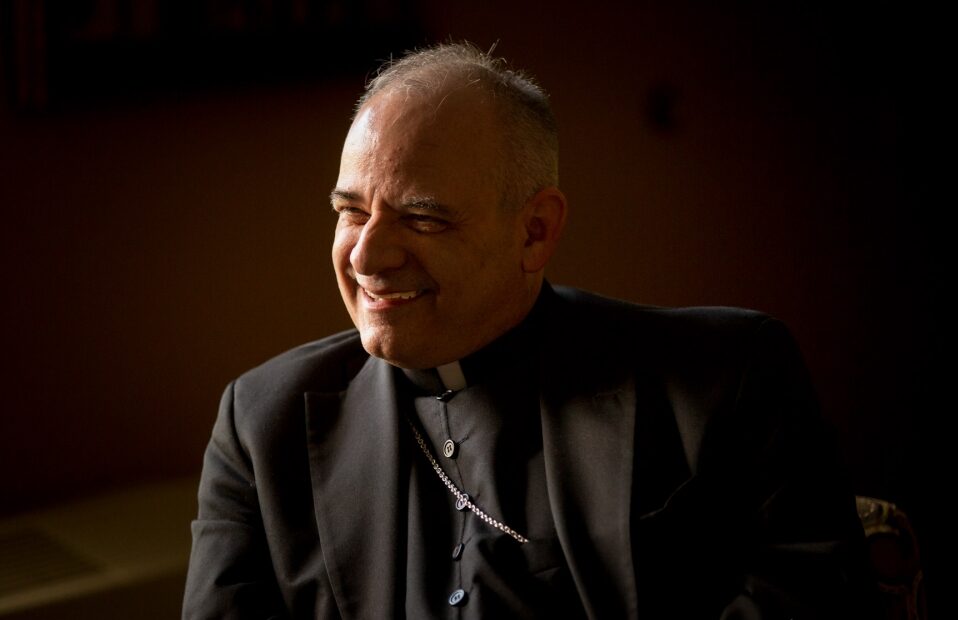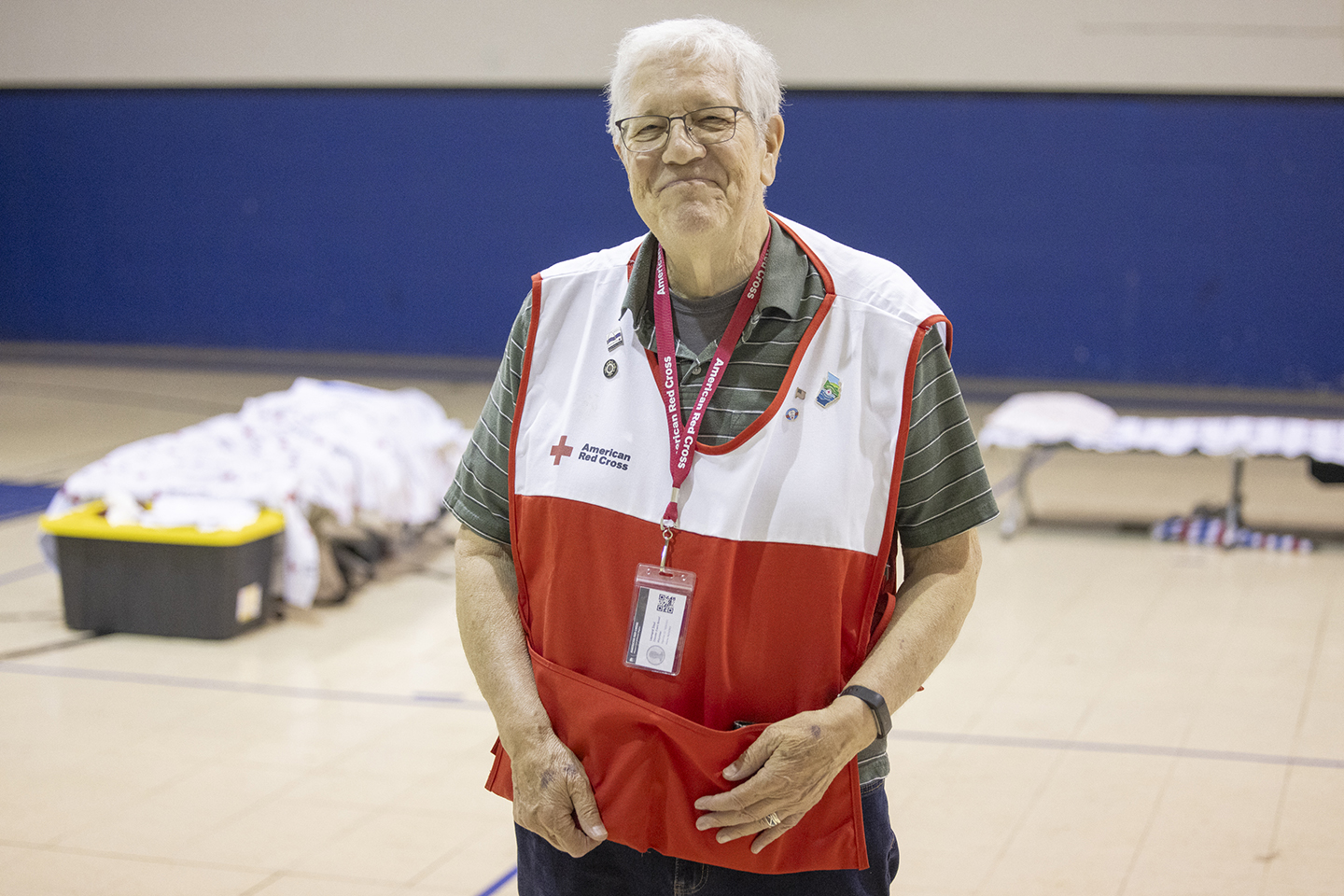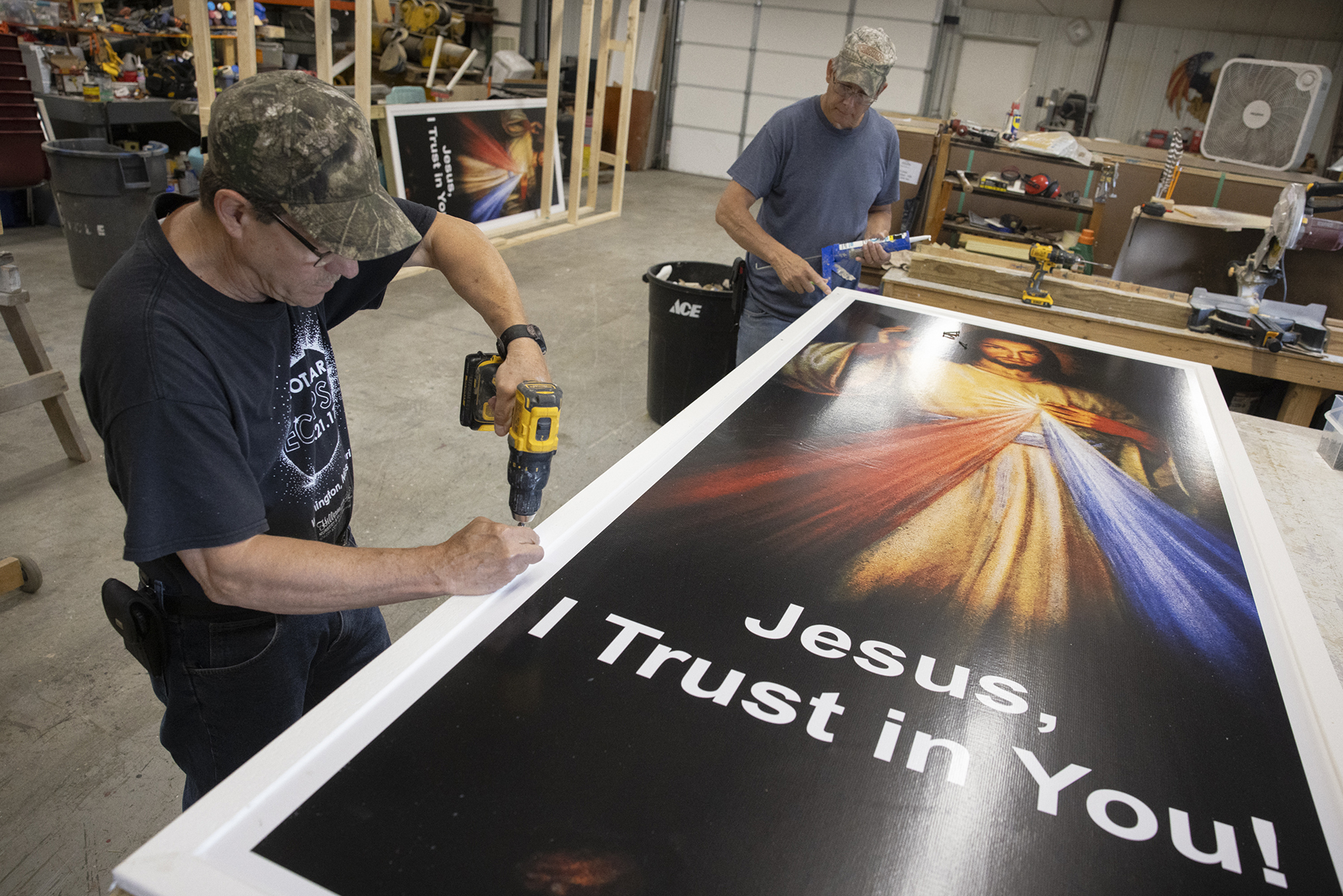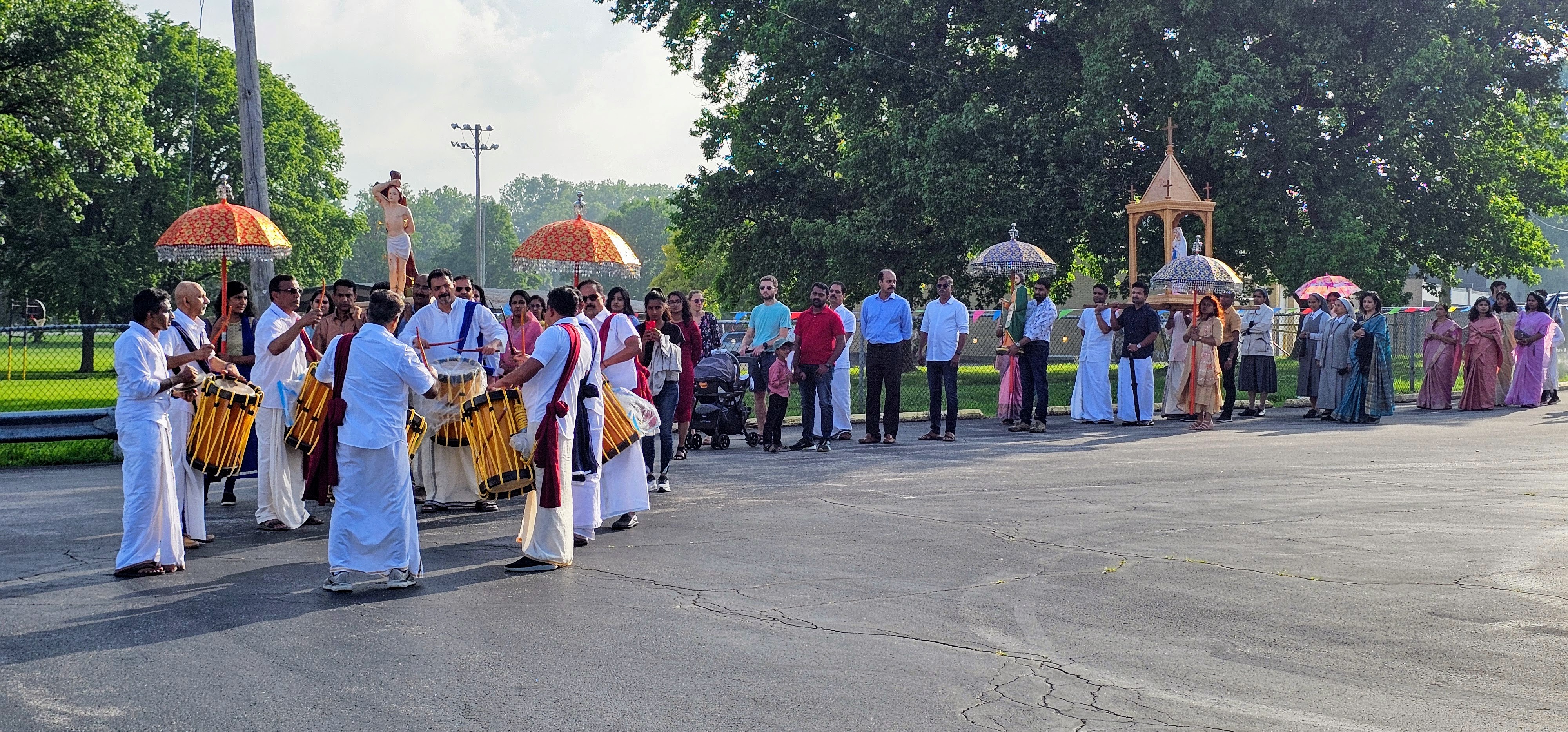1940s time capsule from Sts. Mary and Joseph Archives Office among newest items to be preserved at archdiocesan Archives Office

Archives Office provides research opportunities to the public
Pat (Brady) Fenelon was 3 years old when the cornerstone of Sts. Mary and Joseph Church was placed in 1940.

Eighty-two years later, Fenelon was present when the time capsule placed inside of that cornerstone was opened at an open house Dec. 7 at the Archdiocesan Office of Archives and Records.
“I was baptized there, married there, my parents were buried from that church,” Fenelon said. “We did everything there.”
The time capsule — a copper box measuring 9.5 inches wide, 14 inches long and 8 inches deep — was from the fourth church built at the site. Sts. Mary and Joseph dates back to 1821 in what was once the growing independent town of Carondelet in south St. Louis.
Originally called Our Lady of Mount Carmel and St. Joseph of the Angel — later shortened to Sts. Mary and Joseph — the parish closed in 2005 and reopened as a chapel administered by St. Stephen Protomartyr Parish. The chapel closed in October 2021.
The contents of the time capsule were curated at a time when many nations were in the thick of World War II. A letter found in the box from pastor Father George P. Keating noted: “At the present perilous time when all Europe is engaged in war — in death-struggle for economic supremacy —we unite our prayers with those of his holiness Pope Pius XXII, that Almighty God in His goodness may turn the hearts of men from war to thoughts of peace.”
“When this cornerstone is opened, no doubt one and all of us will have passed before the judgment seat of the Most High,” Father Keating continued. “It is our fervent prayer that all of us, both priests and people, will have long since migrated to our true home to enjoy the beatific vision.”
Other artifacts included copies of the St. Louis Post-Dispatch, the St. Louis Globe-Democrat, The Catholic Herald, and Social Justice, a Catholic weekly publication, all from 1940. A handful of religious medals and coins dated 1940 and several religious booklets also were included, as was a list of items from a time capsule from the previous church building.

One memory that stands out to Fenelon was when she and several other eighth-graders at Sts. Mary and Joseph School were invited to serve as godparents at the baptism of several African-American children who lived in the neighborhood. Her parents had to sign a form giving permission. The baptism took place in 1951, a peak time of racial segregation, including within the Church, but Fenelon’s parents were supportive of their daughter serving as a witness.
“There were four of us,” Fenelon said. “The kids were school age or a little younger. We never saw them again after that.”
Artifacts from Sts. Mary and Joseph’s time capsule will remain with the Archives Office, which serves as the archdiocese’s official repository and collective memory of the activities of the Catholic community of faith in the region.
The Archives Office is located at the Cardinal Rigali Center in Shrewsbury, the former Kenrick Seminary, which dates back to 1916 and now serves as the pastoral offices for the archdiocesan curia.
Archived materials include a wide spectrum: everything from glass plate negatives from the 19th century, handwritten manuscripts (the earliest document is a 1771 contract between a Jesuit missionary priest and St. Joseph Church in Prairie du Rocher, Illinois, in which he agrees to become their pastor), a hockey stick presented to St. John Paul II during his 1999 pastoral visit to St. Louis and documents that were born in the digital age.
Research collections are available to the public, including information on the bishops of the archdiocese, parishes, schools and seminaries, Catholic publications and historical books and journals. Baptismal and other sacramental certificate requests and school transcripts are available through a specific search request.
“When we talk about materials as archives, we’re not only talking about trying to keep something for five years, we’re talking about trying to keep something for 50 years, for 100 years, 500 years, 1,000 years — as close to forever as we possibly can,” said archives director Eric Fair. “We have to determine the best ways to preserve all of those materials.”
>> Archdiocesan Office of Archives and Records
The Archdiocesan Office of Archives and Records is open Monday through Friday, from 9 a.m.-4 p.m. The office is closed on holidays and holy days. The research room is available by appointment only.
Through its holdings, the office supports the larger mission of the archdiocese by serving as the collective memory of the activities of the Catholic community of faith in the region. Researchers are welcome, and the office provides access to its collections as permitted by the Code of Canon Law, civil law and conservation considerations.
To learn more about the Archives Office, make an appointment or request sacramental or Catholic school transcripts, see www.archstl.org/archdiocesan-archives.
Pat (Brady) Fenelon was 3 years old when the cornerstone of Sts. Mary and Joseph Church was placed in 1940. A letter from a 1940 time capsule from Sts. Mary … 1940s time capsule from Sts. Mary and Joseph Archives Office among newest items to be preserved at archdiocesan Archives Office
Subscribe to Read All St. Louis Review Stories
All readers receive 5 stories to read free per month. After that, readers will need to be logged in.
If you are currently receive the St. Louis Review at your home or office, please send your name and address (and subscriber id if you know it) to subscriptions@stlouisreview.com to get your login information.
If you are not currently a subscriber to the St. Louis Review, please contact subscriptions@stlouisreview.com for information on how to subscribe.







